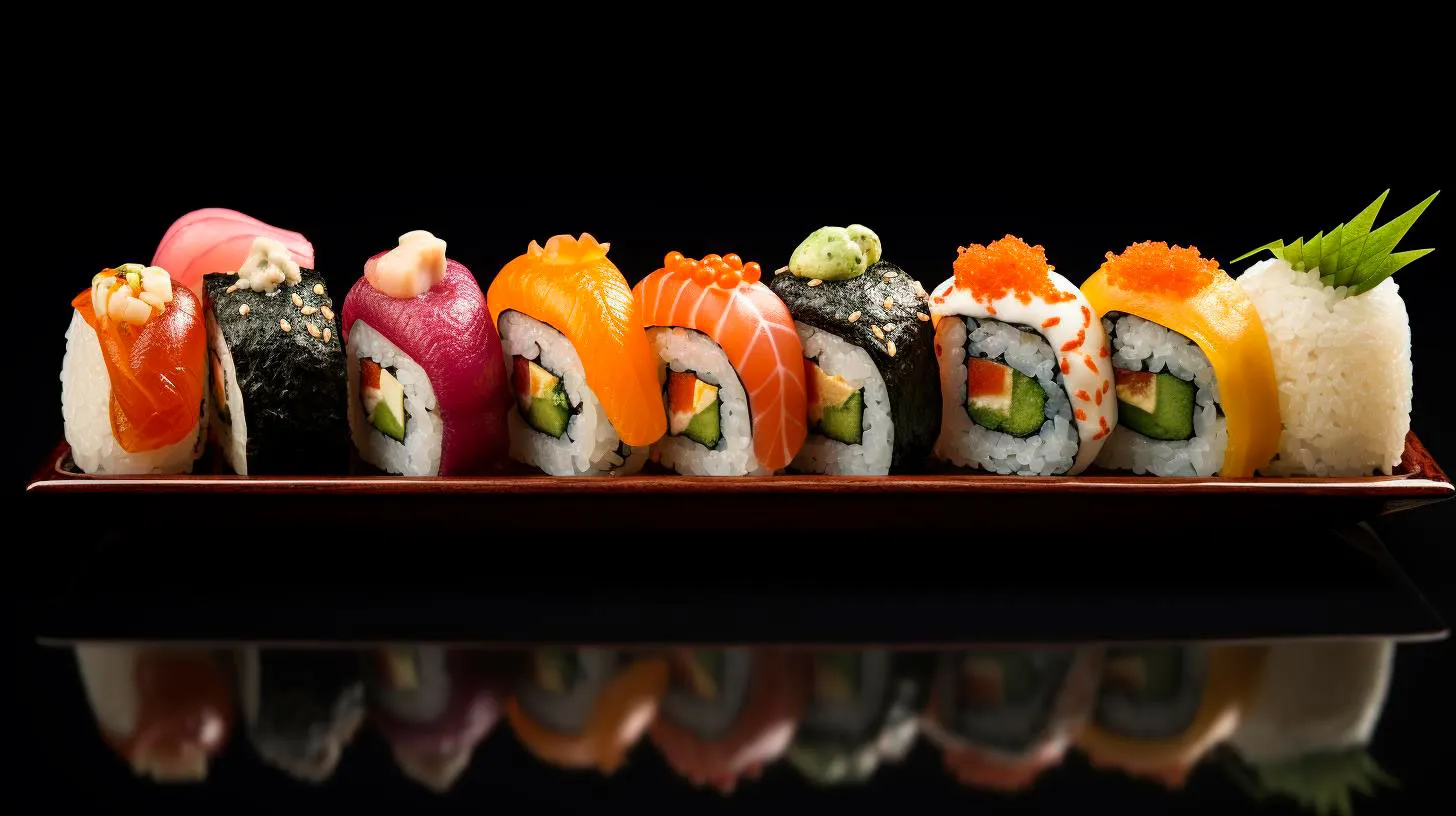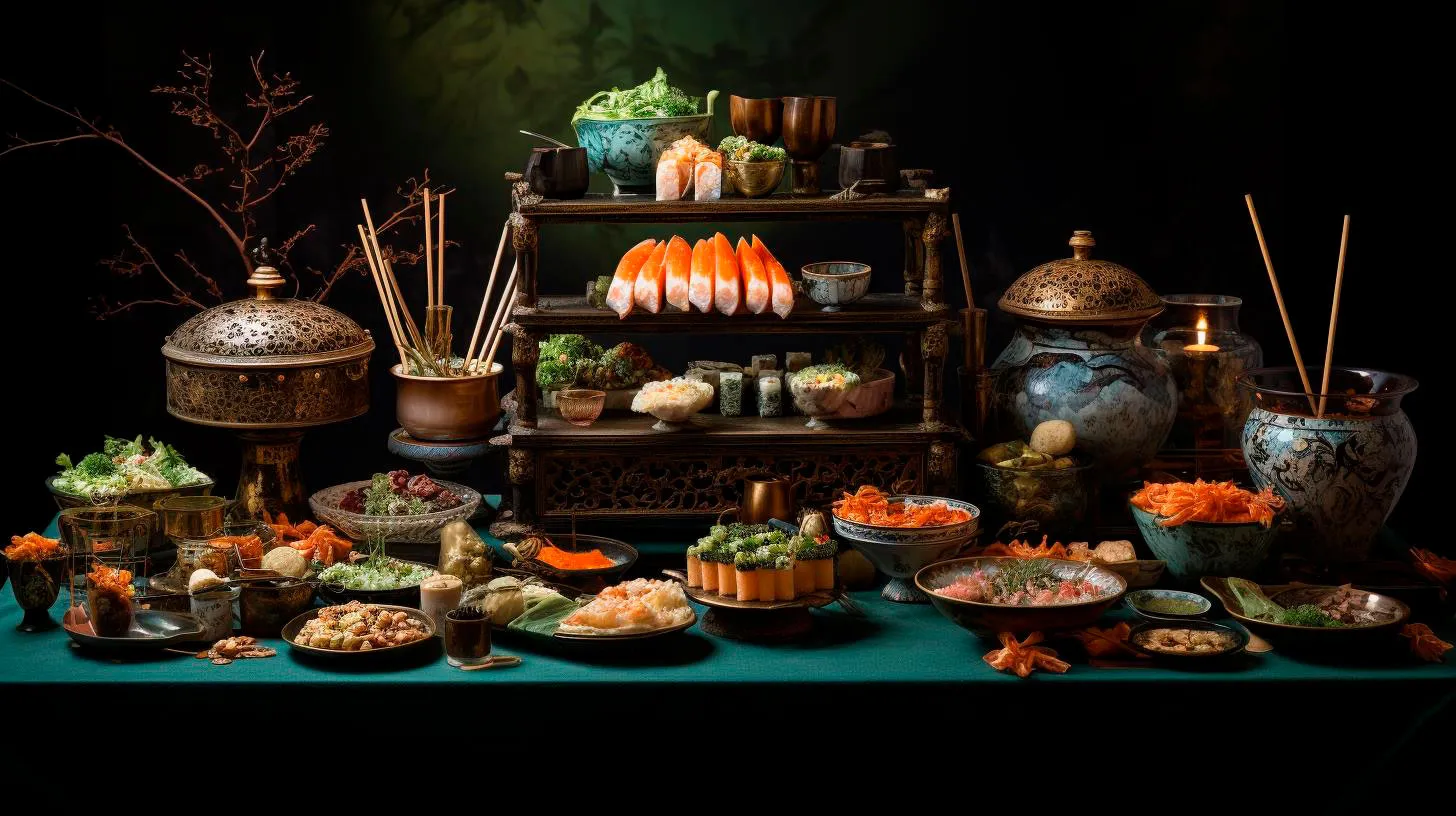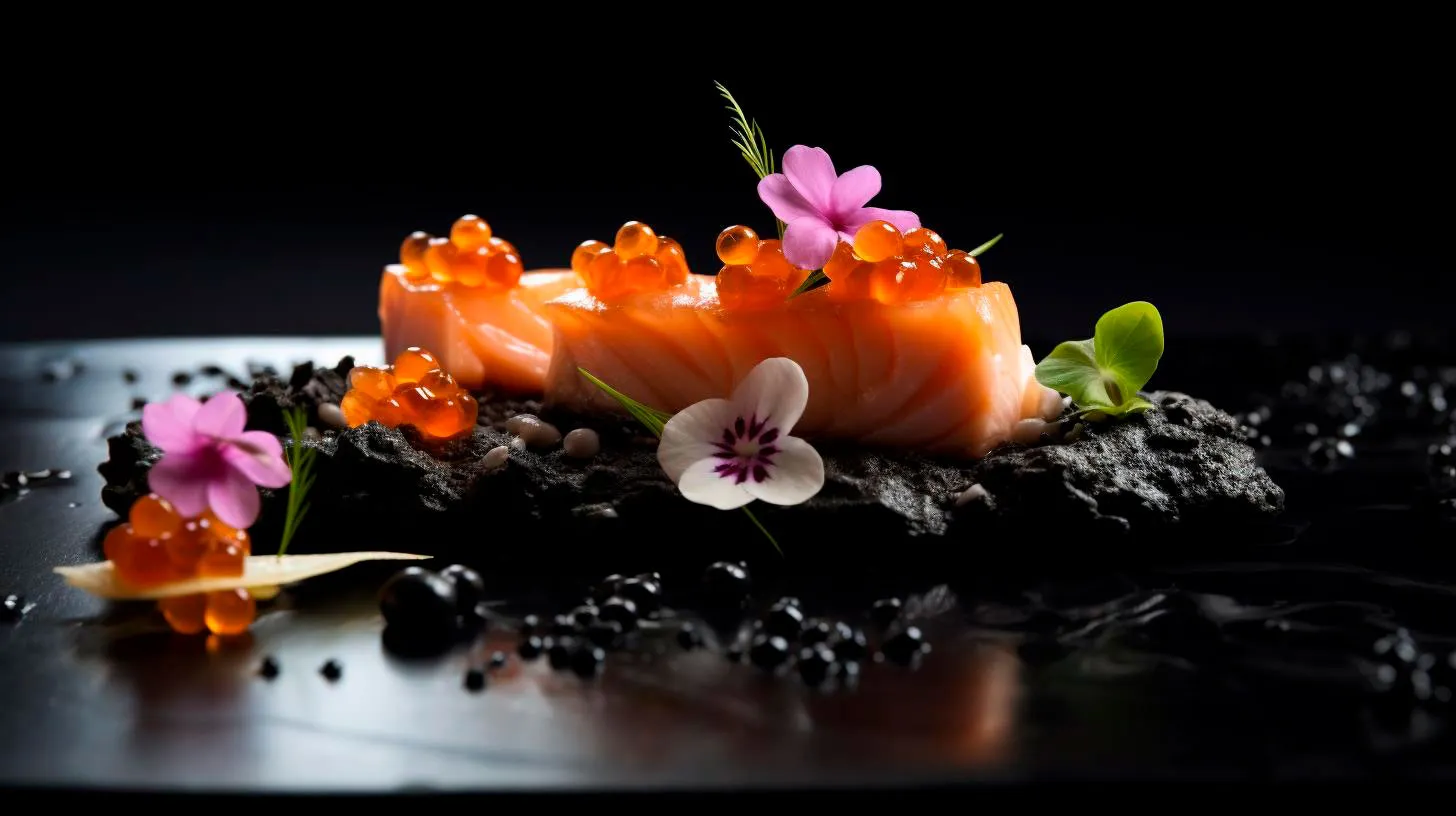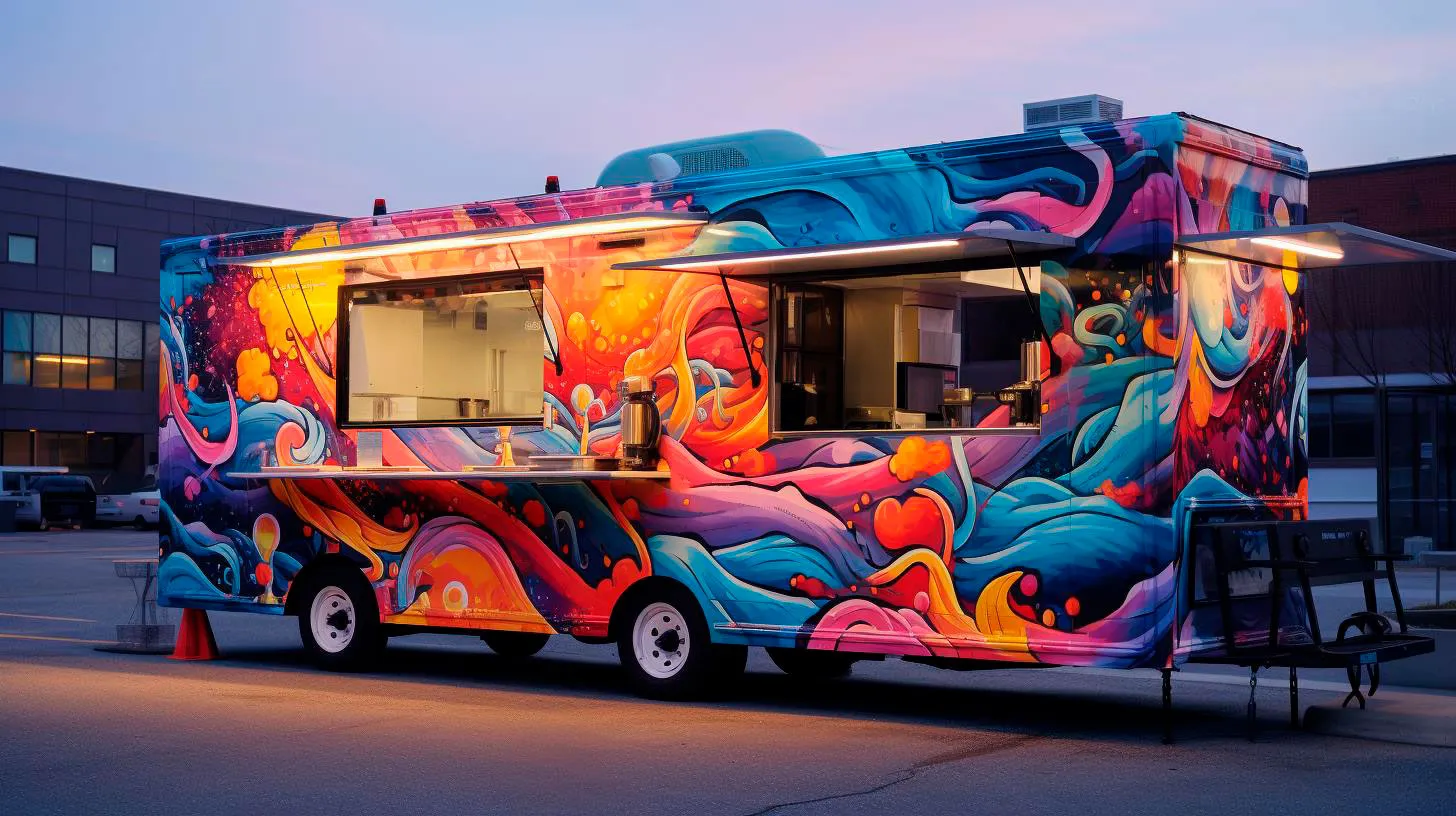Through the Lens of Sushi: Exploring the Artistry of Food Photography
One particular genre of food photography that has gained popularity is sushi photography, where the delicate nature and vibrant colors of the dishes lend themselves perfectly to the camera lens.
Food photography goes beyond simply capturing an image of a dish; it is an art form that aims to evoke emotions and convey the taste, texture, and essence of the culinary creation. Sushi, with its meticulous presentation and balanced aesthetics, provides a perfect canvas for photographers to showcase their skills and creativity. Let’s dive deeper into the artistry of sushi photography with its unique features, advantages, and key takeaways.
The Art of Sushi Photography
Sushi, originating from Japan, is not only a culinary delight but also a visual masterpiece. Its precise arrangement of fresh ingredients, contrasting colors, and intricate textures can be transformed into awe-inspiring photographs. Here are some key features and techniques that make sushi photography an art in itself:
- Precision and Presentation: Sushi requires meticulous attention to detail, from the placement of each ingredient to the presentation on the plate. Photographers must capture these intricate details to convey the craftsmanship behind the dish.
- Lighting and Composition: Proper lighting plays a crucial role in enhancing the visual appeal of sushi. Soft, natural light helps illuminate the delicate textures and vibrant colors while creating a sense of depth. Composition techniques, such as the rule of thirds and leading lines, add visual interest to the photograph.
- Macro Photography: Sushi’s intricate details, like the glistening fish scales or the delicate rice grains, can be best captured using macro photography. This technique allows photographers to magnify small elements, creating captivating images.
- Props and Styling: Choosing the right props and styling elements can elevate sushi photography. Bamboo mats, chopsticks, and traditional plates help create an authentic and visually pleasing composition.
The Advantages of Sushi Photography
Aside from its visual appeal, sushi photography offers several advantages for photographers looking to showcase their creativity and attract a wider audience. Here are some benefits of delving into the world of sushi photography:
- Global Popularity: Sushi has gained immense popularity worldwide, making sushi photography relatable to a broad audience. Sharing sushi images allows photographers to connect with food enthusiasts globally.
- Cultural Representation: Sushi is deeply rooted in Japanese culture and history. Through sushi photography, photographers can explore and appreciate the cultural significance of this culinary art form.
- Instagram Worthy: In the era of social media, aesthetically pleasing images have become essential. Sushi’s visually appealing nature makes it a popular subject on platforms like Instagram, providing photographers with an opportunity to gain higher visibility and engagement.
- Collaborative Opportunities: The world of sushi extends beyond the kitchen. Collaborations with sushi chefs, restaurants, and culinary influencers can provide photographers with unique opportunities to create captivating content and build their professional network.
Key Takeaways for Aspiring Sushi Photographers
If you’re considering exploring the artistry of sushi photography, here are some key takeaways to keep in mind:
- Practice Patience: Sushi photography requires patience and attention to detail. Experiment with different angles, lighting setups, and compositions to capture the best shot.
- Showcase Artistry: Highlight the artistry behind sushi by capturing the intricate details and precision involved in its preparation.
- Create a Story: Aim to evoke emotions and tell a story through your images. Showcase the freshness, texture, and flavors of the sushi, taking your viewers on a culinary journey.
- Stay Authentic: While it’s important to stay on top of current trends, don’t forget to add your unique perspective and style to your sushi photography. Authenticity will help you stand out in a sea of images.
In conclusion, sushi photography is a captivating art form that allows photographers to showcase their creativity while appreciating the culinary beauty of this traditional Japanese dish. With its precision, vibrant colors, and meticulous presentation, sushi provides the perfect subject for aspiring food photographers. By mastering the techniques, understanding the advantages, and infusing personal style, photographers can capture stunning images that mesmerize viewers and leave them craving a taste of the artistry behind sushi.
The Role of Sushi Photography Aesthetics on the Plate
In this article, we will explore the role of sushi photography aesthetics and how it influences our experience of this visually stunning cuisine.
1. The Art of Sushi Presentation
In the culinary world, presentation is everything. When it comes to sushi, the art of presentation is taken to a whole new level. Sushi chefs not only focus on creating delectable flavors but also put immense effort into arranging the ingredients meticulously on the plate. Each piece of sushi is carefully crafted to exhibit an artistic balance of colors, textures, and shapes.
The camera lens captures these visually stunning creations and allows us to appreciate the intricate details that might go unnoticed during a regular dining experience. Through sushi photography, we get a closer look at the meticulous placement of ingredients, the vibrant colors of fresh fish and vegetables, and the delicate balance of different textures.
Key Takeaway:
- Sushi photography allows us to appreciate the artistry and attention to detail that sushi chefs put into their creations.
2. Creating a Visual Feast
Sushi photography goes beyond simply capturing a plate of food. It aims to create a visual feast that entices viewers and evokes their appetite. The use of high-quality cameras, proper lighting, and skilled photography techniques allow photographers to highlight the freshness and beauty of the ingredients.
Color plays a crucial role in sushi photography aesthetics. Vibrant hues of red, orange, green, and purple make the sushi ingredients visually appealing and appetizing. Close-up shots of glistening fish, textured seaweed, and perfectly molded rice can make our mouths water.
Moreover, the placement of sushi on elegant ceramic dishes or traditional wooden boards adds an element of authenticity and enhances the overall visual appeal. By paying attention to the smallest details, sushi photographers create captivating images that elevate the dining experience even before taking the first bite.
Key Takeaway:
- Sushi photography aims to create a visual feast that stimulates our senses and builds anticipation for the dining experience.
3. Influencing Cultural Appreciation
Sushi is not just a dish; it is a representation of Japanese culture and tradition. Through visual storytelling, sushi photography gives us a glimpse into the rich cultural heritage associated with this iconic cuisine. Photographs of sushi convey a sense of elegance, simplicity, and harmony – qualities deeply ingrained in Japanese aesthetics.
Photographers often incorporate elements of Japanese culture in their shots, such as traditional tea sets, bamboo mats, or decorative chopsticks. These props provide a context that allows viewers to connect with the cultural significance of sushi beyond its culinary appeal, fostering a deeper appreciation for the art form.
Furthermore, sushi photography also helps popularize Japanese cuisine worldwide. Through social media platforms, these visually captivating images reach a global audience, sparking curiosity and enticing people to explore and try sushi for themselves.
Key Takeaway:
- Sushi photography not only showcases the beauty of the cuisine but also contributes to the promotion and preservation of Japanese culture.
4. The Power of Visual Storytelling
In the digital age, where attention spans are constantly challenged, compelling visuals are vital for capturing and retaining interest. Sushi photography embraces the power of visual storytelling to engage viewers and evoke emotions.
Photographers often go beyond capturing the final sushi masterpiece. They take us behind the scenes, showing the meticulous preparation, the skilled hands of sushi chefs, and the hustle and bustle of a sushi bar. These candid shots give us an insight into the passion and dedication that goes into every plate of sushi.
Additionally, sushi photography is often accompanied by captions or descriptions that provide information about the ingredients, the chef’s inspiration, or the history of a particular sushi style. These textual elements complement the visual appeal, making the experience more informative and immersive.
Key Takeaway:
- Sushi photography combines captivating visuals with informative storytelling to create an engaging experience for viewers.
In conclusion, sushi photography aesthetics play a significant role in shaping our perception and appreciation for this beloved Japanese cuisine. By capturing the artistry of sushi presentation, creating visual feasts, influencing cultural appreciation, and utilizing the power of visual storytelling, sushi photographers transport us into a world of culinary art. The next time you come across a stunning sushi photo, take a moment to appreciate the effort and creativity that went into creating that masterpiece.
Visual Delights: How Sushi Photography Impacts Food Appreciation
But what impact does sushi photography have on our food appreciation? Let’s dive into this visual journey and explore the various aspects that make sushi photography so enticing.
1. Turning Food into Art
Sushi photography has transformed the way we perceive food, turning it into a form of art. With its meticulous preparation and vibrant colors, sushi is inherently visually appealing. Photographers skillfully capture every detail, from the intricately arranged ingredients to the subtle variations in texture. This elevates sushi from a mere dish to a work of art, enticing viewers with its beauty. Through these captivating images, sushi photography showcases the creativity and craftsmanship that goes into each sushi roll.
- Sushi photography transforms food into a form of art.
- Photographers capture the meticulous preparation and vibrant colors of sushi.
- Attention to detail showcases the creativity and craftsmanship in sushi rolls.
2. Social Media Influence
The rise of social media platforms has significantly contributed to the popularity of sushi photography. Platforms like Instagram have become hotspots for sharing aesthetically pleasing images of food. Sushi, with its visually appealing presentation, has become a favorite subject for food bloggers, influencers, and enthusiasts alike. These influential individuals curate visually stunning feeds, gaining a large following and inspiring others to appreciate and explore the world of sushi. This social media influence has turned sushi photography into a global trend.
- Social media platforms like Instagram have popularized sushi photography.
- Influencers with visually stunning feeds inspire others to appreciate sushi.
- Sushi photography has become a global trend due to social media influence.
3. Immersive Culinary Experience
Sushi photography allows viewers to immerse themselves in a virtual culinary experience. Through a single image, photography captures the essence of a dish, triggering our senses and instilling cravings. The vivid colors, textures, and the artful presentation of sushi evoke feelings of excitement and anticipation. As a result, sushi photography enhances our food appreciation by creating a sensory experience that extends beyond taste. It allows us to indulge in the visual aspect of dining, heightening our anticipation for the actual culinary experience.
- Sushi photography triggers our senses and creates cravings.
- Vivid colors and artful presentation of sushi enhance our food appreciation.
- Photography creates a sensory experience that extends beyond taste.
A Final Word
Sushi photography has revolutionized the way we appreciate and consume food. By transforming sushi into a form of art and utilizing the power of social media, it has captured the attention of food enthusiasts worldwide. Through visually appealing images, sushi photography offers an immersive culinary experience, triggering our senses and enhancing our appreciation for the culinary artistry behind each sushi roll.
So next time you come across a stunning sushi photograph, take a moment to appreciate the visual delights it offers. The artful arrangement of ingredients and the meticulous crafting of each roll deserve our attention and admiration. Allow sushi photography to transport you into a world where food becomes an extraordinary visual journey!
Capturing Culinary Art: The Influence of Sushi Photography
In the age of social media, sushi photography has become an influential trend, captivating foodies around the world. In this article, we will explore the impact of sushi photography, from its rise to dominance in the digital world to its influence on culinary art.
The Rise of Sushi Photography
The popularity of sushi photography can be attributed to the explosion of social media platforms and the increasing role of visual content. With platforms like Instagram boasting over a billion users, sharing visually appealing images has become an art form. Food, and sushi in particular, has emerged as a favorite subject among photographers, chefs, and food enthusiasts.
Social media influencers, popularly known as food bloggers, have played a significant role in amplifying the trend of sushi photography. Sharing drool-worthy images of sushi rolls, sashimi platters, and nigiri creations has become a lucrative business for many. These influencers have garnered massive followings, creating trends in food photography and influencing culinary culture worldwide.
The Impact on Culinary Art
Sushi photography not only satisfies our visual cravings but has also impacted the way sushi chefs approach their craft. The art of plating has taken center stage, with chefs dedicating their time and creativity to presenting sushi in a visually stunning manner. The rise of sushi photography has led to chefs pushing the boundaries, experimenting with ingredients, arrangements, and colors to create visually striking dishes.
Additionally, sushi photography has become an avenue for culinary diversity. Traditional sushi styles, such as Nigiri and Maki, have been joined by innovative creations inspired by global cuisines. By capturing these fusion sushi dishes, photographers and chefs alike contribute to the evolution of culinary art, blending flavors and techniques from various cultures.
Key Takeaways
As sushi photography continues to grow in popularity, it is essential to understand its significance and influence. Here are some key takeaways:
- Sushi photography has thrived due to the rise of social media platforms and the increasing value of visual content.
- Influencers and food bloggers play a significant role in popularizing sushi photography.
- Sushi photography has impacted culinary art, inspiring chefs to focus on presentation and encouraging culinary diversity.
- The trend has allowed for the fusion of flavors and techniques from around the world into sushi creations.
In conclusion, sushi photography has emerged as a powerful force in the culinary world. Its influence extends beyond social media, shaping the way sushi is prepared and presented. By combining the art of sushi-making with photography, we capture not only the sushi itself but also the passion and creativity that go into crafting this beloved cuisine. So, the next time you appreciate an exquisitely plated sushi roll, remember the impact that sushi photography has had on the art of food.



